Before I begin, I must confess that I haven’t infiltrated the Bilderberg group and so don’t have a list of the most powerful people in the world, if that’s what you were expecting!
But the question, who are “They” is, of course, an interesting one. “They” is used over and over again when discussing or looking at causes of a problem - very often in topics that could be described as “conspiracy theories”. “They did this or that”, “They want their man in power”, “They crashed the economy” etc etc. But who are “They” and do they exist or are they just a figment of our imagination? Is it just an easy or lazy way to shift the blame onto something we don’t quite understand?
One way to examine this problem is through the science of complexity and this article is based on a TED talk from ten years ago, called “Who controls the world?”.
“We spend billions of dollars trying to understand the origins of the universe, while we still don’t understand the conditions for a stable society, a functioning economy or peace.” - D Hebing
James Glattfelder, a physicist, decided to look at our interconnected system after the last financial crash. He wanted to see whether complexity theory could explain how the world economy worked. Are there a small group of elites discussing what will happen and handing out orders or is the interconnected system more than the sum of its parts? Is it more like a murmuration of starlings, whereby each bird moves in formation with the whole swarm but without knowingly being controlled.
An interesting fact about murmuration is that starlings are the only species of bird that do it but that’s for another post.
Standard physics finds it very hard to explain complex systems because often, what looks like complex behaviour, is actually the result of very simple rules of interaction.
So now it is pointless looking at equations but instead one should instead look at the interaction within the system.
One of the fascinating things about complex systems is a thing called ‘Emergence’. Looking at the individual parts of the system cannot explain the behaviour being observed in the whole.
A great example of this is a termite “cathedral”. By just observing an individual termite you will never be able to understand how one of these structures is created. However far you delve into a termite’s brain, you will never find the answer. Who is in control, who is giving the orders? The answer is no one and everyone at the same time. But by studying how the termites interact, we can get a better idea of what is going on.
Therefore, networks are great representations of complex systems. Mr Glattfelder and his colleagues wanted to analyse economic networks and ultimately the network of global corporate control.
To do this they looked at Ownership networks. All networks have nodes and links and in this analysis each node was a company with each link being the percentage of ownership.
So, shareholder A owns X% of the shares in company B and they also assigned a value based on operating revenue.
They found a number of patterns, some of which are highlighted below.
These ownership networks are directly linked to control and tell you who the key players are and whether they are interconnected.
Answers to these questions have implications for systemic risk. The greater the concentration of power, the more vulnerable the system is. A great example of this is the banking system. Stress can flow through the system like an epidemic, resulting in “too big to fail” policies.
To discover who controls the world, they started with a database of 13 million ownership relations from 2007. As this is a lot of data they focussed on transnational corporations (TNCs), companies that operate in more than one country. They found 43,000 TNCs and built a network by looking at the TNC shareholders both upstream and downstream. The network ended up having 600,000 nodes and 1 million links.
The network was structured with a periphery and a centre. The centre contained 75% of all the players.
The centre also contained a tiny, dominant core, made up of highly interconnected companies.
36 percent of the TNCs are in the centre but make up 95 percent of the total operation revenue of all TNCs.
How does this structure influence control? Well because ownership gives voting rights and therefore they were able to look at control over the TNCs value. They could then assign a degree of influence to each shareholder and finally look at the flow of control over the whole network.
After a bit of number crunching to look at the network control they found that 737 top shareholders have the potential to control 80% of the TNCs value. These 737 top players represent 0.123% and mainly include financial institutions in the US and UK.
Even more shocking, 146 shareholders have the potential to control 40% of the TNCs value. That represents 0.024%.
The conclusion was that the level of control is extreme and is very likely to pose systemic risk to the global economy.
It is believed that this network structure is an emergent property and therefore the result of self-organisation. It depends on the rules of interaction within the system.
So, it seems there is a “They” imposing its control over the world but it is quite possible that this is an emergent phenomenon. This means that “They” don’t create the structure in a top-down way but instead they emerge, by the laws of nature, through a bottom-up system.
Or perhaps it is like consciousness and the brain. Looking at the sum of the parts of the brain gives no indications as to what consciousness is or where it comes from. Once the brain achieves a certain complexity, consciousness emerges. But once that consciousness emerges, it is able to control the brain. So here we see both a bottom-up, emergent phenomenon which eventually controls the very thing that created it, in a top-down hierarchy. I suspect this may be closer to the truth as to how the “They” identified above, impose their control.
The data used in this analysis was from 15 years ago so an updated version would be interesting to see. I’m guessing that fewer shareholders will be in control of more of the TNCs value and is probably causing much of the systemic risk we are experiencing today.

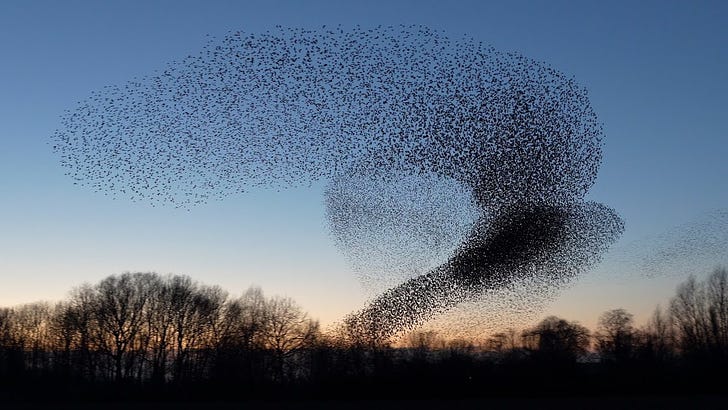


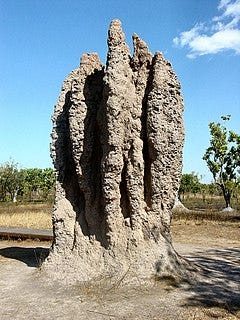
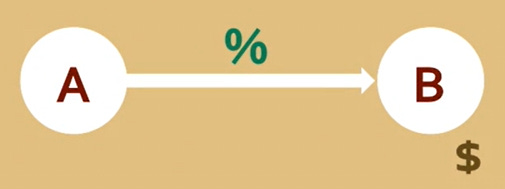
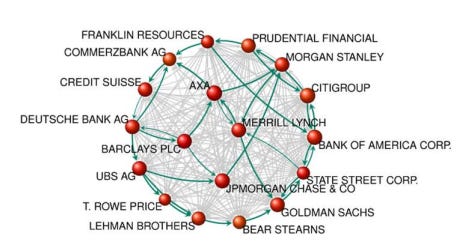
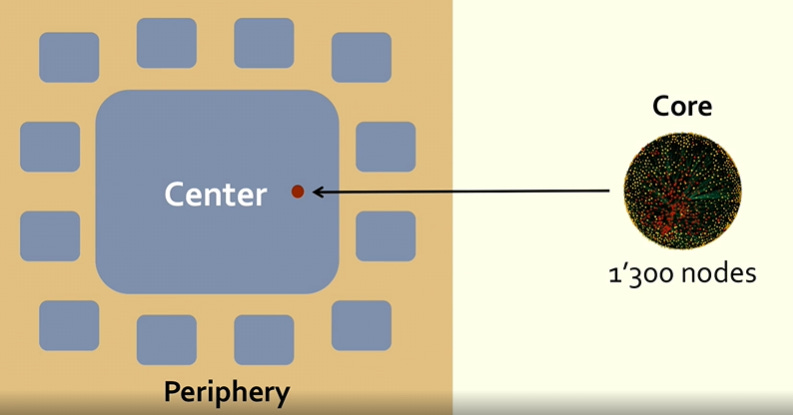

This is fascinating material!
👍🏽
The world has always been run by the elite, both good and bad, mostly the latter. That’s because power is a much bigger magnet to bad actors than to good ones.
Many believe that since the Middle Ages the world has been run by secret societies made up of rich and powerful families who control the most powerful industries on the planet. What seems clear today is that a new form of fascism has emerged that is global in scale. It is a collusion between elites in the public and private sectors that is designed to gain complete control of everyone else. But the global elites now appear to be fighting among themselves and do not all share the same vision for what the world of 2030 or 2035 should look like. Things have gotten very complicated